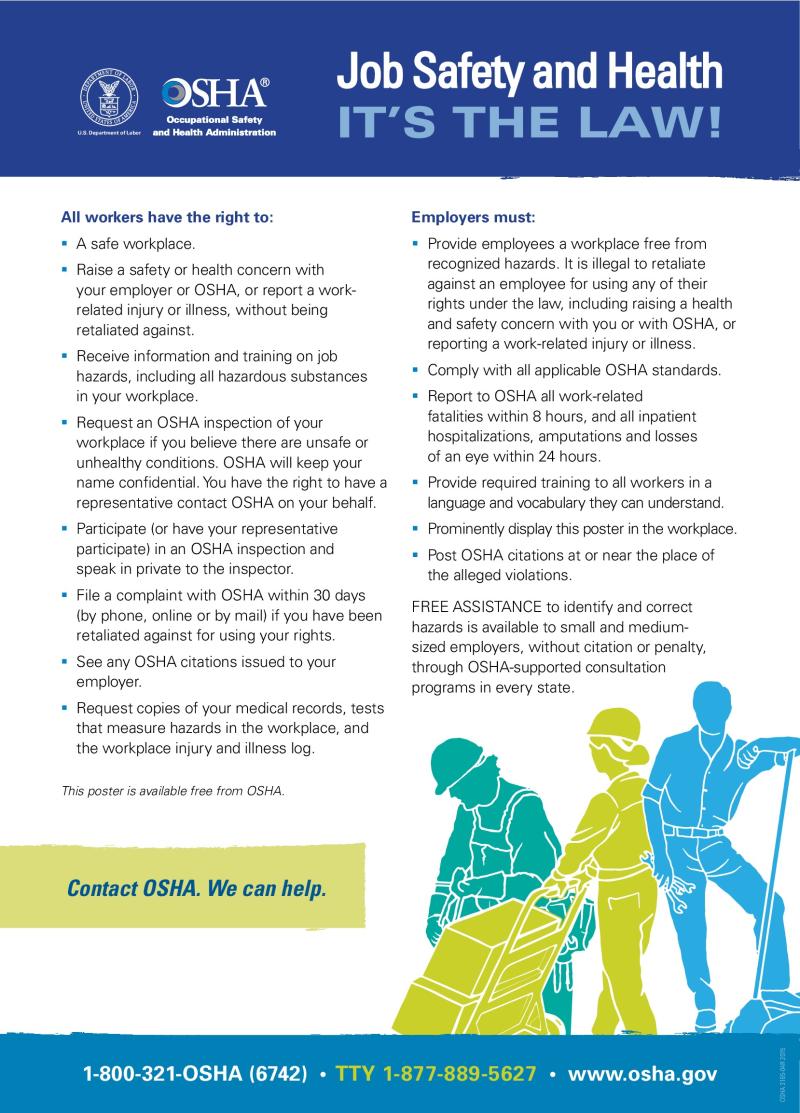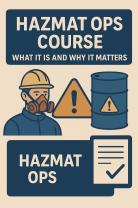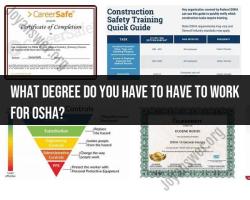How can safety professionals help prevent OSHA fines?
Safety professionals play a crucial role in helping organizations prevent Occupational Safety and Health Administration (OSHA) fines by ensuring compliance with safety regulations and fostering a culture of workplace safety. Here are key ways safety professionals can contribute to avoiding OSHA fines:
Knowledge of OSHA Standards:
- Safety professionals must have a comprehensive understanding of OSHA standards relevant to their industry. Staying informed about updates and changes to regulations is essential for ensuring compliance.
Conducting Regular Audits and Inspections:
- Safety professionals should regularly conduct audits and inspections to identify potential hazards and ensure that safety measures are in place. This proactive approach helps address issues before they result in OSHA violations.
Risk Assessments:
- Conducting risk assessments allows safety professionals to identify and evaluate potential risks in the workplace. By addressing these risks through preventive measures, organizations can minimize the likelihood of OSHA violations.
Employee Training and Education:
- Safety professionals should develop and implement comprehensive training programs to educate employees on safety procedures, hazard recognition, and emergency response. Well-trained employees are more likely to adhere to safety guidelines.
Hazard Communication Programs:
- Implementing effective hazard communication programs ensures that employees are aware of the potential dangers associated with chemicals and hazardous substances. This includes proper labeling, safety data sheets (SDS), and training on safe handling.
Recordkeeping and Documentation:
- Safety professionals must maintain accurate records of safety training, inspections, incident reports, and other relevant documentation. Thorough recordkeeping is essential in demonstrating compliance in case of an OSHA inspection.
Incident Investigation:
- Prompt and thorough investigation of incidents, injuries, or near misses is crucial. Identifying the root causes allows safety professionals to implement corrective actions, preventing similar incidents in the future and demonstrating a commitment to continuous improvement.
Correcting Non-Compliance Issues:
- When safety deficiencies or non-compliance issues are identified, safety professionals should work swiftly to implement corrective actions. This may involve modifying procedures, providing additional training, or improving safety equipment.
Emergency Preparedness and Response Planning:
- Safety professionals should develop and regularly update emergency preparedness and response plans. Being well-prepared for emergencies minimizes the risk of OSHA violations related to inadequate emergency procedures.
Engaging Leadership and Employees:
- Creating a culture of safety requires active engagement from both leadership and employees. Safety professionals should collaborate with management to promote a strong safety culture where everyone takes responsibility for their own safety and the safety of others.
Staying Informed about OSHA Enforcement Initiatives:
- Safety professionals should stay informed about OSHA's enforcement priorities and initiatives. This knowledge helps organizations prioritize their efforts and resources to address areas of focus for regulatory compliance.
Participating in Voluntary Programs:
- OSHA offers voluntary programs and partnerships that organizations can join to demonstrate their commitment to safety. Safety professionals can explore programs like the Voluntary Protection Programs (VPP) and the Safety and Health Achievement Recognition Program (SHARP).
Seeking External Support:
- Safety professionals can collaborate with external safety consultants or industry associations to gain insights, expertise, and best practices. External support can provide a fresh perspective on safety compliance and help organizations stay ahead of regulatory requirements.
Proactive Approach to Change Management:
- Safety professionals should be involved in change management processes to assess the impact of organizational changes on safety. This proactive approach helps identify and address safety concerns associated with modifications to processes, equipment, or facilities.
Regular Communication with OSHA:
- Establishing open communication with OSHA and participating in voluntary inspections or consultations can help organizations receive guidance and feedback from regulatory authorities. Proactive engagement demonstrates a commitment to compliance.
By implementing these strategies, safety professionals contribute to creating a safe and compliant work environment, reducing the risk of OSHA fines, and ultimately ensuring the well-being of employees. Regular communication, education, and a proactive approach to safety management are essential elements of an effective safety program.
Avoiding the Sting of OSHA Fines: Keys to Workplace Safety
OSHA fines can be a costly consequence for businesses failing to maintain safe working conditions. Understanding the main causes, implementing proactive measures, and utilizing valuable tools like audits can help keep your workplace safe and compliant.
1. Primary Causes of OSHA Fines:
- Lack of hazard recognition and control: Failing to identify and address potential hazards in the workplace leaves employees vulnerable to injuries and illnesses.
- Inadequate training and education: Employees need proper training on safety procedures, hazards specific to their role, and the use of personal protective equipment (PPE).
- Non-compliance with OSHA standards: Every industry has specific OSHA standards regarding safety protocols, exposure limits, and equipment requirements. Neglecting these regulations can lead to hefty fines.
- Accident and injury records: A high frequency of accidents or injuries often raises red flags, triggering OSHA investigations and potential penalties.
- Improper recordkeeping and documentation: Maintaining accurate records of safety inspections, training logs, and incident reports is crucial for demonstrating compliance and mitigating fines.
2. Proactive Measures for Safety Professionals:
- Regular hazard assessments: Conduct thorough and frequent inspections to identify and eliminate potential hazards before they lead to accidents.
- Comprehensive training programs: Develop and implement training programs tailored to specific tasks and potential risks, ensuring employees understand safe practices and procedures.
- Clear communication and signage: Clearly communicate safety rules, procedures, and emergency plans to all employees. Display prominent signage highlighting hazards and safety protocols.
- Active employee engagement: Encourage a culture of safety by involving employees in hazard identification, reporting incidents, and participating in safety initiatives.
- Regular maintenance and inspections: Ensure equipment and machinery are properly maintained and inspected to prevent malfunctions and accidents.
3. Legal Implications of OSHA Fines:
- Financial penalties: OSHA fines can range from hundreds to thousands of dollars per violation, depending on the severity and nature of the offense. Repeated violations can lead to even higher penalties.
- Reputational damage: News of OSHA violations can damage a company's reputation, impacting customer trust and employee morale.
- Potential lawsuits: Injuries or illnesses resulting from OSHA violations can lead to lawsuits and significant financial liabilities for the company.
4. Safety Audits and Compliance Assessments:
- Proactive identification of risks: Regular audits and assessments proactively identify areas of non-compliance, allowing for corrective action before OSHA involvement.
- Improved safety culture: Demonstrating a commitment to safety through regular audits fosters a culture of safety awareness and responsibility among employees.
- Reduced risk of fines: Addressing potential issues identified in audits minimizes the risk of incurring OSHA fines during official inspections.
- Enhanced insurance coverage: Some insurance companies offer lower premiums for businesses with good safety records and documented compliance efforts.
5. Case Studies of Successful Prevention:
- Case Study 1: A manufacturing company implemented a proactive safety program, including regular hazard assessments, comprehensive training, and employee engagement initiatives. This resulted in a significant reduction in accident rates and no OSHA violations for over five years.
- Case Study 2: A construction company partnered with a safety consultant to conduct thorough safety audits. The identified shortcomings were addressed promptly, leading to improved safety protocols and avoidance of potential OSHA fines during a subsequent inspection.
By understanding the factors leading to OSHA fines, implementing proactive safety measures, and utilizing tools like audits and assessments, safety professionals can create a safer workplace for employees, protect their company from financial penalties and legal repercussions, and contribute to a culture of safety awareness and responsibility. Remember, prioritizing safety is not just an obligation, but also an investment in a healthier, happier, and more productive workforce.













